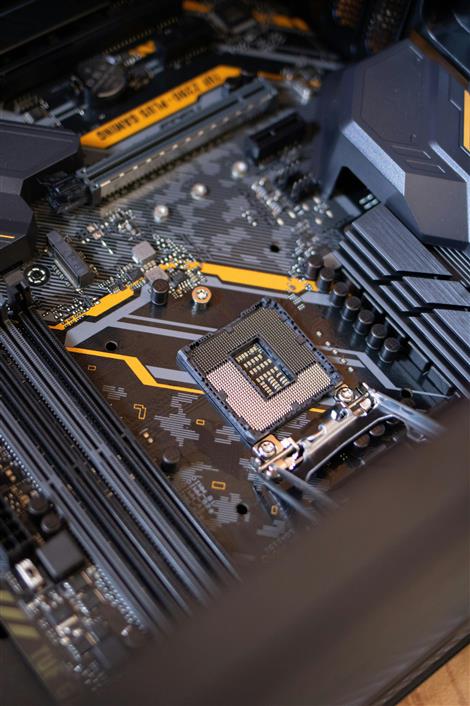
Quantum computing is one of those terms that sounds like it belongs in a sci-fi movie or inside a physics lab filled with chalkboards and coffee-stained notebooks. But behind the buzzwords, the idea is straightforward: quantum computers aim to solve certain problems that are far too complex for today’s computers to handle efficiently.
To understand what makes them different, we’ll break this topic down without diving too deep into formulas or jargon. If you’ve ever wondered how quantum computers work, why they matter, or what they might do for us in the future, here’s a guide that strips away the hype and explains things in plain language.
What Makes a Computer “Quantum”?
To get why quantum computers are different, we have to first look at how regular computers work.
A standard computer—like the one in your phone or laptop—processes information using bits. Each bit is either a 1 or a 0. These bits combine in massive sequences to represent data and run programs. Even the most powerful supercomputers use this system.
Quantum computers, on the other hand, use qubits (short for “quantum bits”). A qubit can also be a 1 or a 0, but with a twist: it can be both at the same time (this is called superposition). This may sound strange, but it’s based on the principles of quantum physics—where particles don’t behave the way we’re used to in everyday life.
Superposition: More Than One Answer at Once
Imagine flipping a coin. A regular computer would record either heads or tails. But a qubit in superposition is like the coin spinning in mid-air—it’s both heads and tails until you observe it.
Why does that matter? Because it means a quantum computer can explore many possibilities at once. If a classical computer is like a flashlight shining on one path at a time, a quantum computer is more like a lantern illuminating a whole network of paths simultaneously.
Entanglement: A Mysterious Link
Another quantum principle used in these computers is entanglement. When two qubits become entangled, the state of one instantly influences the state of the other—no matter how far apart they are.
This strange connection allows quantum computers to coordinate and process data in ways that classical computers can’t. It’s not about speed in the traditional sense, but about solving specific types of problems more efficiently.
What Can Quantum Computers Do That Classical Ones Can’t?
Quantum computers aren’t meant to replace your laptop or phone. They’re built for special tasks that require enormous processing power and involve complex math.
Here are a few things quantum computers might excel at:
- Simulating molecules and atoms. This could help scientists understand chemical reactions better, leading to new materials or drugs.
- Solving optimization problems. Think of delivery routes, airline scheduling, or financial portfolios. Quantum computers could help find better answers faster.
- Factoring large numbers. This might not sound exciting, but it matters in cryptography (the technology behind online security). Quantum computing could challenge the encryption methods we rely on today.
- Machine learning and data analysis. Certain types of AI models may benefit from quantum computing’s ability to work with large, complex datasets.
That said, most of these applications are still in development. Quantum computers today are in the early stages, and we’re still figuring out the best ways to use them.

So, Where Are We Now?
As of now, quantum computers exist—but they are fragile, expensive, and limited. Qubits are incredibly sensitive and can lose their quantum state quickly due to noise or heat. This is why most quantum machines are kept in ultra-cold, highly controlled environments.
Researchers are working to build systems that are more stable and reliable. There are a few dozen companies and institutions actively building quantum machines and testing small-scale algorithms, but we’re not at the point where everyday businesses or individuals can make use of them.
Think of it like the early days of flight. The first planes existed, but they couldn’t carry passengers across oceans just yet. We’re in that phase with quantum computing.
Why Does It Matter If It’s Still Early?
Because the potential payoff is huge. The types of problems quantum computers could solve—such as modeling new vaccines, improving logistics, or strengthening cybersecurity—could bring real-world benefits.
But progress takes time. There’s a lot of engineering involved in making qubits reliable, scaling up systems, and writing software that actually makes use of quantum capabilities. It’s not just a matter of flipping a switch.
Governments, tech firms, and universities are investing because they see quantum computing as part of a long-term shift—not a quick fix. It’s not about hype; it’s about preparing for a future where some problems are simply too complex for today’s machines.
Will You Ever Use One?
Most people won’t own a quantum computer. Just like you don’t own a supercomputer or a server farm, but still benefit from the internet, streaming, and cloud services—quantum will likely be behind the scenes.
In the future, cloud platforms could offer quantum computing power to scientists, researchers, or businesses working on specialized problems. You might never “see” a quantum computer, but it could quietly help design better materials for your car, improve battery efficiency, or assist in developing new medicines.
Final Thoughts
Quantum computing is not magic. It’s not going to change everything overnight. But it does represent a new way of thinking about computation—not as a linear process, but as a multidimensional one.
Instead of trying to do what classical computers already do well, quantum computers are being built to tackle what they struggle with: complex, interconnected problems that require looking at many possibilities at once.
As the technology matures, we’ll begin to understand more clearly what it can and cannot do. But even now, it’s clear that this isn’t just a passing trend—it’s a serious effort to rethink how we solve problems at the deepest level.
And while the math behind it might be mind-bending, the goal is very down to earth: better tools for solving real-world challenges.






